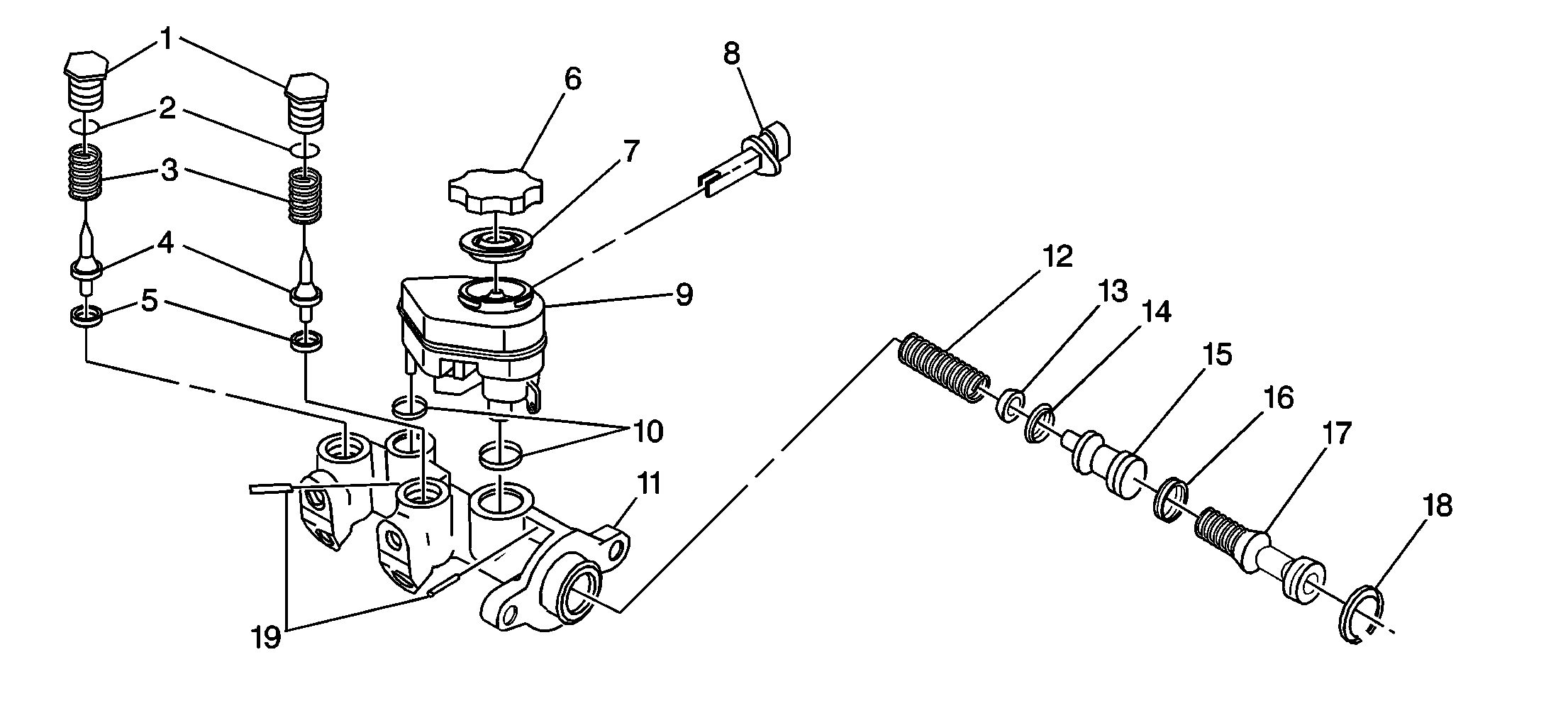
Important:
• Replace all of the components that are included in the repair
kits used to service this master cylinder. • Lubricate the rubber parts with clean brake fluid in order to
ease assembly. • Do not use lubricated compressed air on the brake parts. This
action may cause damage to the rubber components. • If you remove or disconnect any hydraulic part, bleed all or part
of the brake system. • The specified torque values are for dry, non-lubricated fasteners. • Perform the service operations on a clean bench that is free from
all mineral oil materials.
This master cylinder is a composite design. The master cylinder contains a plastic reservoir (9) and an aluminum body (11).
The master cylinder is used in a diagonally split system.
| • | One front and one diagonally rear brake is served by the primary piston (17). |
| • | The opposite front and rear brakes are served by the secondary piston (15). |
The master cylinder incorporates the functions of a standard dual master cylinder. The master cylinder also has a fluid level sensor (8) and integral proportioning. The proportioning valves are designed to provide better front-to-rear braking balance with a heavy brake application.
Fluid Level Sensor
Compact master cylinders are equipped with a fluid level sensor. The sensor activates the BRAKE warning lamp if the fluid level is low. The BRAKE warning lamp turns off when the fluid level is corrected.
